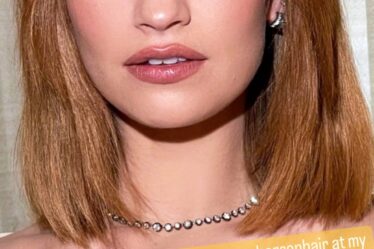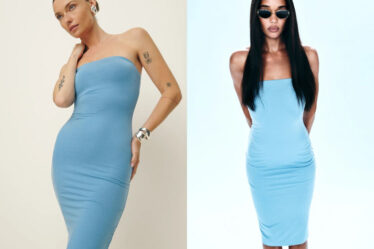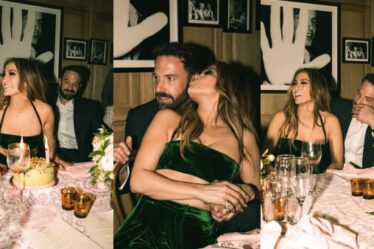
I wasn’t meant to be a life model. My sister and I had started running online life drawing classes during the first lockdown, and for one portrait class, when a friend couldn’t model, I thought: I’ll just do it. I was born with a cleft lip and palate and all my life I’ve had to endure people staring at me. When you have a visible difference, you can feel the stares on you. Putting myself in front of a group of people, who were there to look and then draw me, felt liberating. I felt as if I was reclaiming the stare – like I was inviting these artists to look at me with positivity and respect, rather than staring to be nosy or hateful.
I had started to become aware I looked different from other people when I was about four. My parents were conscious that I should be around children who looked like me, and were good at taking me to cleft lip and palate groups, but when I started school I became more aware of my visible difference. Children would have problems with me over nothing – I think because they felt uncomfortable.
It was when I started secondary school that it really started affecting me. Kids would throw rocks at the windows of our house, smashing one once. I would be pushed and have names shouted at me when I went down the hallway. Even outside school, adults would sometimes shout abuse.
I was lucky to have two older sisters who looked out for me, but sometimes my mum would let me stay at home because I found it so hard.
I really liked fashion and I turned to dressing differently. I used it as a bit of a security blanket. Rather than being called names to do with how I looked, I started getting nicknames like “carpet” because I was wearing a cardigan that looked like a carpet. It was still annoying, but it gave the bullies something else to focus on. Being called a name because of a cardigan is a lot better than being called a horrible name because of a visible difference that you can’t help. It was before words like anxiety were being used as widely as they are now, but, in hindsight, I was anxious and depressed.
I haven’t struggled with bullying as an adult, but I still struggle with anxiety, putting myself out there and being seen. The pandemic was horrible for me, as for everyone, but it also came with unexpected benefits. My visible difference is focused on my nose and mouth – I’ve always said that the one thing I liked about myself was my eyes, so being able to go out wearing a mask and just have my eyes on show felt a lot more comfortable.
My younger self would have loved that, as well as the lockdown, which meant staying at home all the time. Lockdown gave me space to think and be myself. I started to feel that I needed to accept that this is how I look and this is who I am.
My sister had the idea to run an online art club, Fat Life Drawing, to celebrate larger bodies and reclaim the word “fat”. At its peak, we were running it weekly, sometimes getting as many as 250 people; although we do the club less regularly now, we’ve raised more than £30,000 for charity.
When we started, I saw what a positive atmosphere it was and how our participants were seeing themselves as they are, which is the key part of it – to accept yourself as you are, not as you wish you were. I thought our models were beautiful and I loved drawing them; why was I not seeing myself in the same positive light?
A few months later, during the second lockdown, I decided to run a portrait class for people with visible differences. So often, people in portraiture are drawn in a certain way. It’s seen as a flattering thing. One of our models has a cleft that runs from her eye, so one half of her face is affected much more than the other side – she’d had people who had drawn her where they just mirrored her non-cleft side, but it’s not the compliment that people think it is. You want people to celebrate your differences.
Now, I run portrait classes for people with visible differences every year as part of the Face Equality Week run by the charity Changing Faces. There is something quite emotional about being able to take in someone else’s face and draw them in a way that is respectful and kind, not trying to correct anything.
I also found I enjoyed being drawn. You don’t really see people with visible differences in the media or in art, so there was something empowering in being able to look at yourself in that light and see that positive representation. My sister bought me one of my portraits for Christmas and I love looking at it.
Just being able to put myself in front of people in the first place was a really big step for me – I wouldn’t have done it five years ago. I’ve become more confident about how I look and I don’t overthink it as much as I used to. I can go out without makeup. Before, I’d never put my hair up in the summer, even if it was really hot, but now I can tie it back without worrying. I’m 26 now and more comfortable with putting myself out there – I don’t want to hide.



